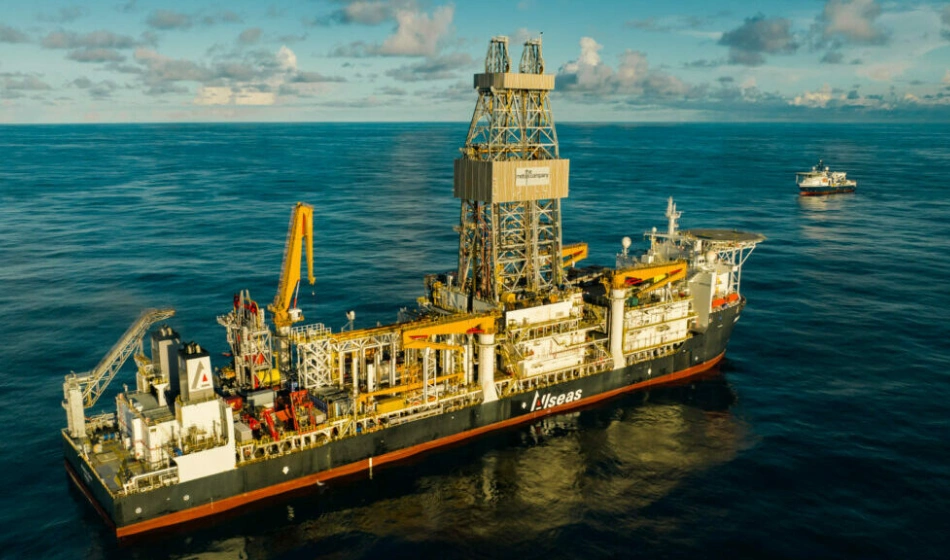The debate around deep-sea mining has escalated in recent years. It is driven by environmental concerns, regulatory uncertainty, and rising demand for minerals needed for renewable energy technologies. This article explores the multifaceted issues, examining both the potential benefits and risks, as well as the contentious discussions it has sparked globally.
The Promise and Peril of Deep-Sea Mining
Deep-sea mining refers to extracting minerals and resources from the ocean floor. The most sought-after materials include nickel, cobalt, and rare earth metals, critical for producing batteries, electric vehicles, and other green technologies. Proponents argue that it could supply these materials, helping accelerate the global transition to clean energy.
The largely unexplored deep sea possesses unique biodiversity that will undoubtedly suffer from large-scale mining operations. However, environmental groups and scientists warn of the profound and potentially irreversible damage that mining could cause to fragile marine ecosystems. They emphasize that large mining activities could greatly harm the unique plants and animals found in the mostly unexplored deep sea.
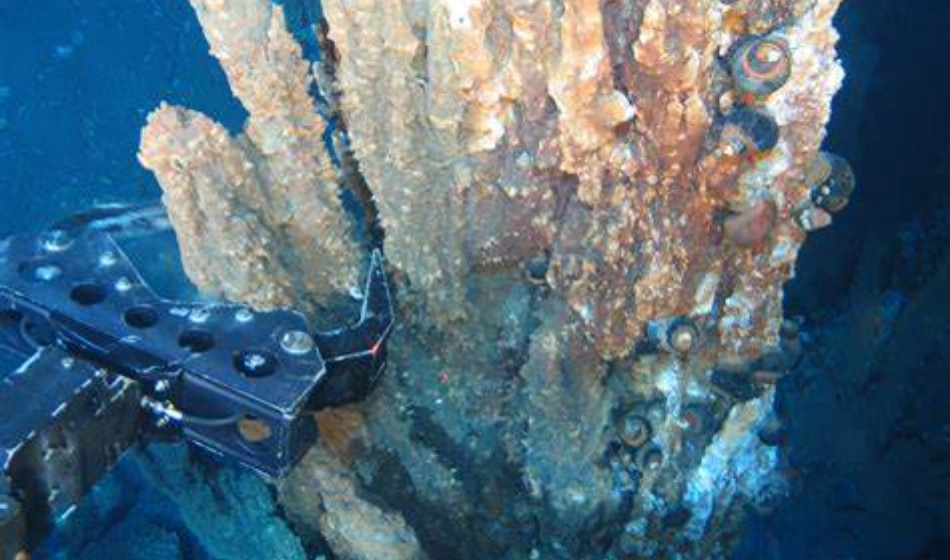
Why the Debate Has Intensified
Several factors have contributed to the intensifying debate:
- Environmental Concerns: The potential ecological risks are immense. Mining the deep sea could disturb marine ecosystems, release toxins, and create massive sediment plumes that impact species thousands of kilometers away. The deep ocean, which absorbs much of the planet’s carbon, could suffer if mining disturbs the balance.
- Regulatory Uncertainty: As reported by S&P Global, the International Seabed Authority (ISA), the organization responsible for regulating these activities, has yet to finalize its mining code. The delay has left a legal grey area, enabling some companies to press forward while others face regulatory roadblocks.
- Investor Hesitancy: Investors and financial institutions are increasingly cautious about the reputational and environmental risks tied to their activities. A report from The Ocean Foundation challenges the financial rationale, citing risks and uncertain returns. Many advocate for urban mining of e-waste metals as a better alternative to ocean mining for minerals.
Key Stakeholders
- Environmental groups: Greenpeace and the Deep Sea Conservation Coalition are at the forefront of opposing deep-sea mining. They advocate for a precautionary approach, emphasizing the need for more research before mining begins.
- Governments and Regulators: Nations with vested interests in the ocean, such as Pacific Island nations, are divided. While some see mining as an economic opportunity, others fear the destruction of their marine environments. The ISA plays a central role in balancing the interests of mining companies and environmentalists.
- Mining Companies: Companies such as The Metals Company are pushing for access to deep-sea mineral deposits. They argue that this could help meet the growing demand for metals required by the renewable energy sector.
Key Developments in 2023
The International Seabed Authority (ISA) held several critical meetings in 2023/2024 to discuss the future of deep-sea mining regulations. Nevertheless, these discussions highlighted the contrasts between nations endorsing mining and those advocating for a moratorium until they acquire more environmental data.
The European Academies’ Science Advisory Council (EASAC) report questions the necessity of deep-sea mining due to unknown ecological consequences and potential land-based mineral sources.
Recent Victories for Environmentalists
Despite the rising pressure from mining companies, environmental groups have secured some notable victories. For example, the Greenpeace report highlights how the recently passed Global Oceans Treaty aims to protect international waters from harmful activities like deep-sea mining.
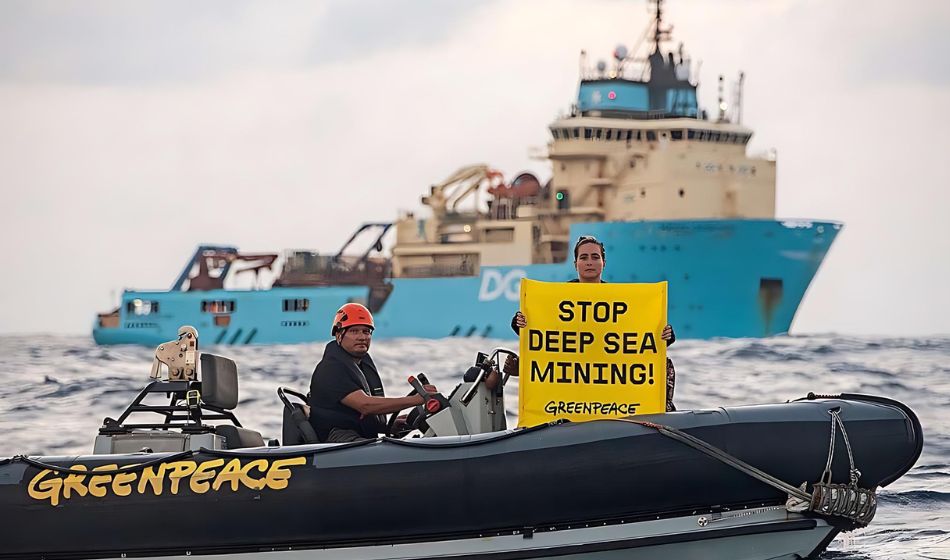
In parallel, a group of Pacific Island nations, including Palau and Fiji, has called for a moratorium on deep-sea mining, citing the potential harm to their marine environments and tourism industries.
The Future of Deep-Sea Mining: What’s Next?
The ISA is under increasing pressure to finalize its regulations, but significant disagreements persist. Some nations advocate for a go-slow approach, while others push for immediate action to exploit the deep ocean’s resources.
- Technological innovations: Improvements in underwater robots and remotely controlled vehicles could lessen the environmental damage from mining. However, some critics say these technologies have not been tested on the large scale needed for this activity.
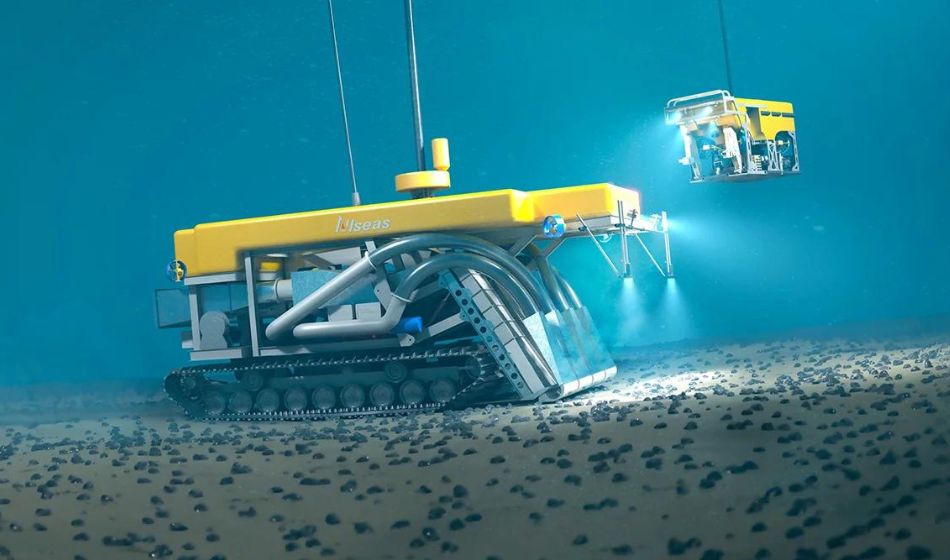
- Alternative Solutions:
The debate has spurred interest in finding alternative sources of minerals. Recycling metals from e-waste and improving land mining are seen as alternatives to deep-sea mining. - Global Cooperation: Let’s all work together as a global community to ensure responsible and caring deep-sea mining practices! Global treaties, such as the UN Convention on the Law of the Sea (UNCLOS), can play a pivotal role in regulating mining activities beyond national jurisdictions.
The Economic Incentive Behind Deep-Sea Mining
As the demand for electric vehicles (EVs), renewable energy storage, and high-tech electronics surges, the global appetite for minerals like cobalt, nickel, manganese, and rare earth elements continues to grow. These minerals are essential for the production of batteries and other critical technologies needed for a green energy transition.
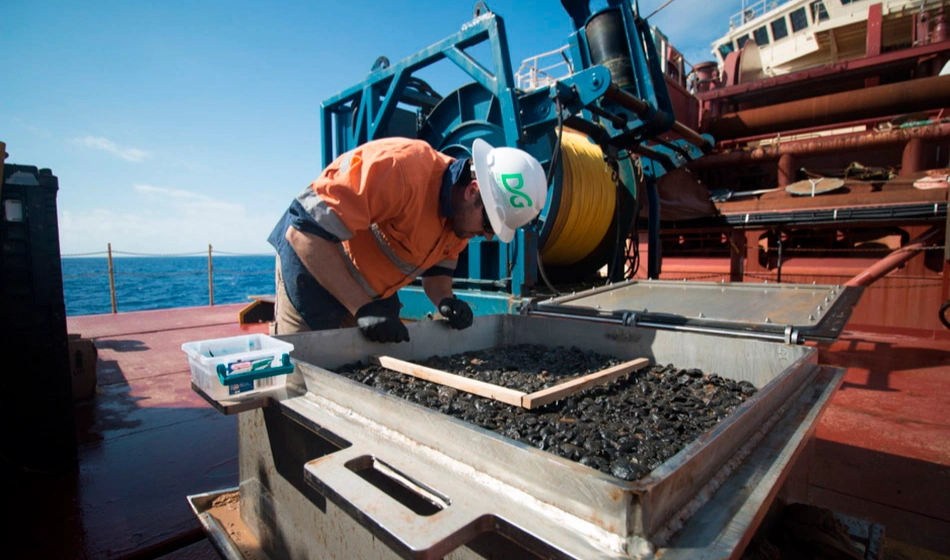
The allure of the deep sea lies in its vast reserves of these critical minerals. The Clarion-Clipperton Zone (CCZ) in the Pacific Ocean, for instance, is estimated to contain billions of tons of polymetallic nodules, rich in cobalt, nickel, and other metals. For many, these deposits represent a solution to supply chain issues and resource shortages. Countries like China currently dominate the production of many of these minerals, and the geopolitical tensions over access to these resources add another layer of complexity to the debate. Deep-sea mining offers an opportunity for nations to diversify their sources of critical minerals, reducing reliance on geopolitically sensitive regions.
However, mining companies face significant economic and technological challenges in scaling up deep-sea mining operations. The costs of developing the necessary technology, overcoming environmental opposition, and navigating complex regulatory environments are formidable.
The Environmental Stakes: What We Know and Don’t Know
Unique Ecosystems at Risk
One of the primary arguments against deep-sea mining is the potential devastation of fragile and unique ecosystems. The deep ocean is one of the least understood and most delicate environments on Earth. Many scientists warn that disturbing the seabed could lead to the extinction of species that have yet to be discovered. For example, hydrothermal vents—underwater geysers that spew mineral-rich fluids—are home to unique organisms that rely on chemical energy, rather than sunlight, to survive. Mining these vents could destroy habitats that have taken millennia to develop.
Moreover, the slow-growing and long-lived species that inhabit the deep sea may be particularly vulnerable to disturbance. Some organisms, like deep-sea corals, can live for hundreds or even thousands of years. Recovery from mining operations, if it occurs at all, could take centuries.
Sediment Plumes: The Hidden Danger
When deep-sea mining equipment disrupts the seabed, it stirs up massive clouds of sediment, which can drift for hundreds of kilometers. These sediment plumes can smother marine life, clogging the gills of fish and other organisms and potentially disrupting entire food chains. The precise long-term impacts of these plumes are still not well understood, but scientists caution that they could have far-reaching effects on ocean ecosystems.
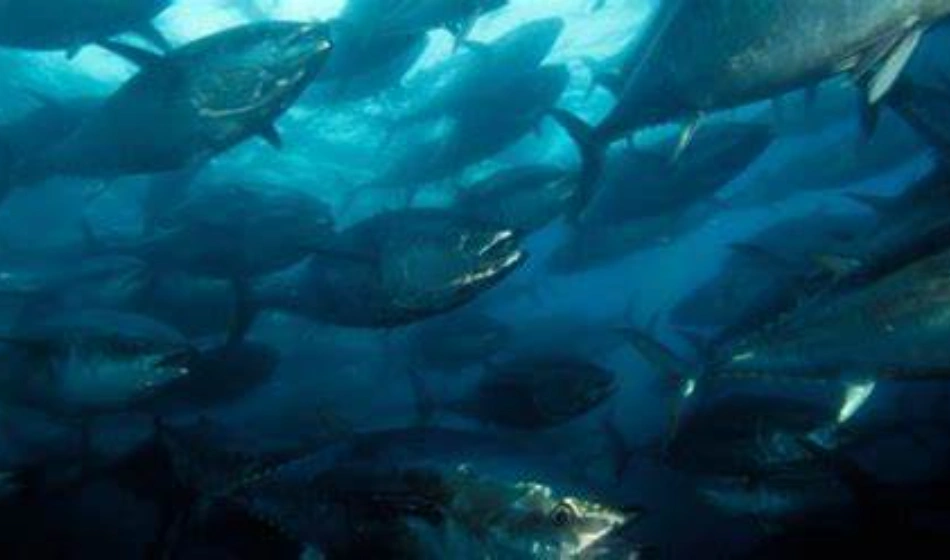
Furthermore, the mining process could release toxic heavy metals, which are currently locked in deep-sea sediments, into the water column. These toxins could accumulate in marine organisms and eventually enter the human food chain through seafood consumption.
The Role of Technology in Mitigating Impact
Supporters of deep-sea mining argue that new technologies could help mitigate some of the environmental risks. For instance, autonomous underwater vehicles (AUVs) and remotely operated vehicles (ROVs) have advanced significantly, offering more precise and less invasive methods for mineral extraction. These technologies are designed to minimize contact with the seabed, theoretically reducing the extent of habitat destruction.
Additionally, some propose the use of real-time environmental monitoring systems to provide immediate feedback on the impact. Critics argue that these technologies remain unproven on the scale necessary for industrial mining operations, allowing for adjustments and more sustainable practices. However, make-sea mining.
Legal and Regulatory Challenges: A Global Governance Dilemma
At the heart of the debate lies the question of who has the authority to regulate deep-sea mining. The United Nations Convention on the Law of the Sea (UNCLOS) established the International Seabed Authority (ISA). To regulate mineral-related activities in international waters beyond any single nation’s jurisdiction.
However, critics argue that the ISA has been slow to create a comprehensive mining code that balances environmental protection with mineral extraction.
The Two-Year Rule: Pressure to Act
The ISA’s so-called “Two-Year Rule” has further complicated the situation. In 2021, the island nation of Nauru invoked this rule. It effectively gave the ISA a deadline to finalize mining regulations by July 2023. If no comprehensive mining code is in place by then, companies could apply for licenses under existing regulations. This move has escalated tensions between pro-mining states and environmental advocates, with many fearing mining could begin before ecological risks are fully understood.
Despite the 2023 deadline, the ISA was unable to finalize a complete set of rules. While this has bought more time for further research and negotiation, the uncertainty surrounding the future of deep-sea mining remains a major concern.
Pacific Island Nations: Caught in the Middle
For many Pacific Island nations, the debate over deep-sea mining represents a double-edged sword. On one hand, these countries could stand to benefit economically from mining activities within their exclusive economic zones (EEZs). On the other hand, they face the risk of losing their rich marine biodiversity and suffering damage to their tourism and fishing industries, which are vital to their economies.
Countries like Palau and Fiji have taken a strong stance against deep-sea mining, calling for a moratorium until more is known about the environmental consequences. They argue that protecting the ocean should take precedence over the uncertain economic benefits of mining.
In contrast, other nations, such as Nauru and Tonga, have shown more willingness to embrace mining activities, hoping that revenues from mineral extraction will provide much-needed economic development. This divide has created tension among the island nations and added complexity to regional and international negotiations on the issue.
Stakeholder Perspectives: A Closer Look
| Stakeholder | Position | Rationale |
| Mining Companies | In favor of deep-sea mining | Argue that deep-sea mining is essential for supplying the critical minerals needed for green technologies. |
| Environmental Groups | Strongly opposed to deep-sea mining | Cite the potential for irreversible damage to marine ecosystems and argue for a precautionary approach. |
| Pacific Island Nations | Divided: some support, others oppose | Economic benefits for some nations, while others fear harm to their marine environments and local economies. |
| International Regulators | Caught in the middle: working to establish balanced regulations | The ISA is tasked with balancing the economic potential of mining with the need to protect the environment. |
| Scientists | Caution against rushing into deep-sea mining | Emphasize the lack of scientific knowledge about the deep-sea ecosystems and the long-term consequences of mining. |
Moral and Ethical Considerations
Beyond the scientific and economic concerns, the debate over deep-sea mining also touches on moral and ethical questions. Do humans have the right to exploit the deep ocean, a part of the planet that remains largely unexplored and untouched by human activity? Should future generations be left with the consequences of actions taken in the pursuit of short-term economic gains?
These questions are particularly pressing when considering the precautionary principle, which advocates that in the face of uncertainty, we should err on the side of caution to avoid harm. Environmentalists argue that until the full impacts of it are known, a moratorium should be enforced.
The debate highlights high stakes for environmental health and economic growth. We need a balanced approach that considers all stakeholders, emphasizes scientific research, and preserves the deep ocean’s role in Earth’s ecosystem for future generations.
Conclusion
The debate over deep-sea mining is unlikely to settle anytime soon. The balance between the need for critical minerals and the protection of marine ecosystems is delicate and requires careful management. The outcome of regulatory discussions in the coming years will determine whether these activities proceed and, if so, how they will be controlled to prevent environmental disasters.
As the world watches, the key stakeholders, environmental groups, governments, mining companies, and regulators must continue to engage in meaningful dialogue to find a solution that addresses both the needs of a green economy and the health of the planet’s oceans.

